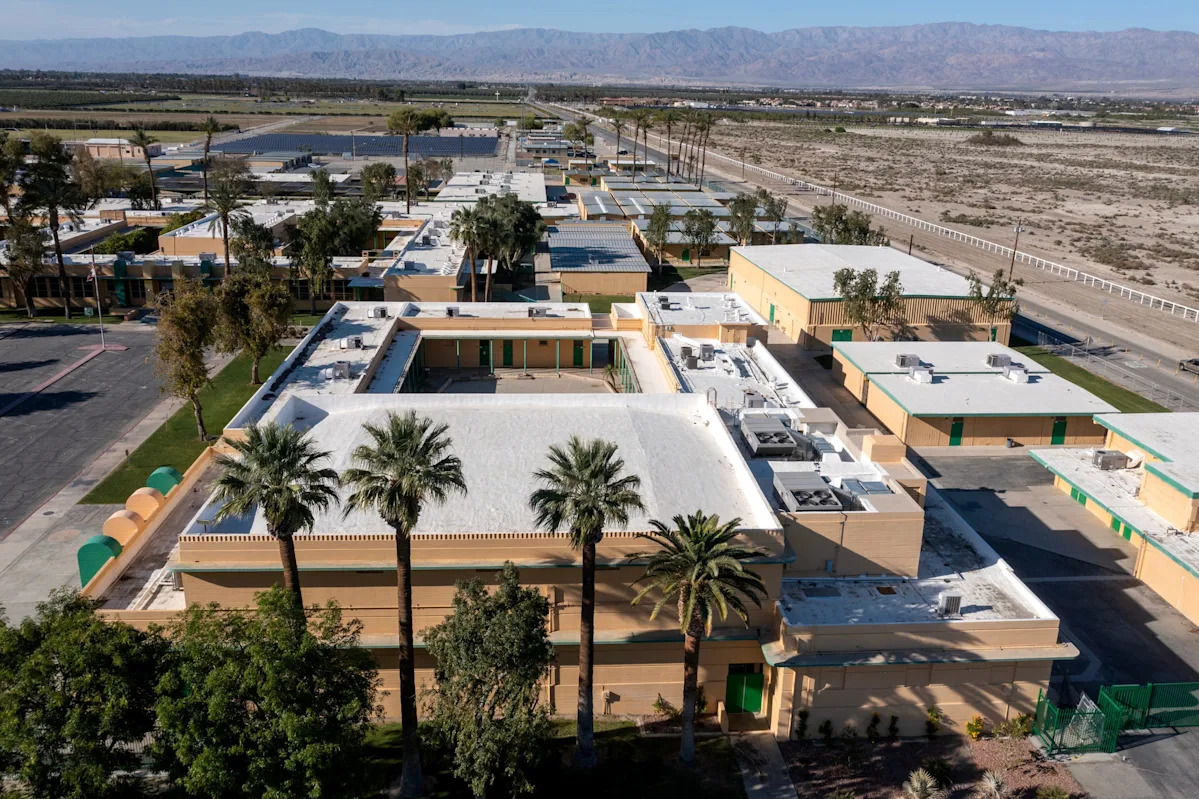A senior from Coachella Valley High School in Thermal has become the face of a statewide lawsuit accusing California of discriminating against low-income school districts in how it distributes funds to modernize aging classrooms.
Miliani Rodriguez, 17, the leading plaintiff, joined education advocates at the René C. Davidson Courthouse in Oakland to announce the suit, which seeks to overhaul the state’s funding system for upgrading school facilities.
The lawsuit alleges that California’s process for distributing school modernization funds gives wealthier districts an unfair advantage — leaving poorer districts like Coachella Valley Unified struggling with deteriorating facilities.
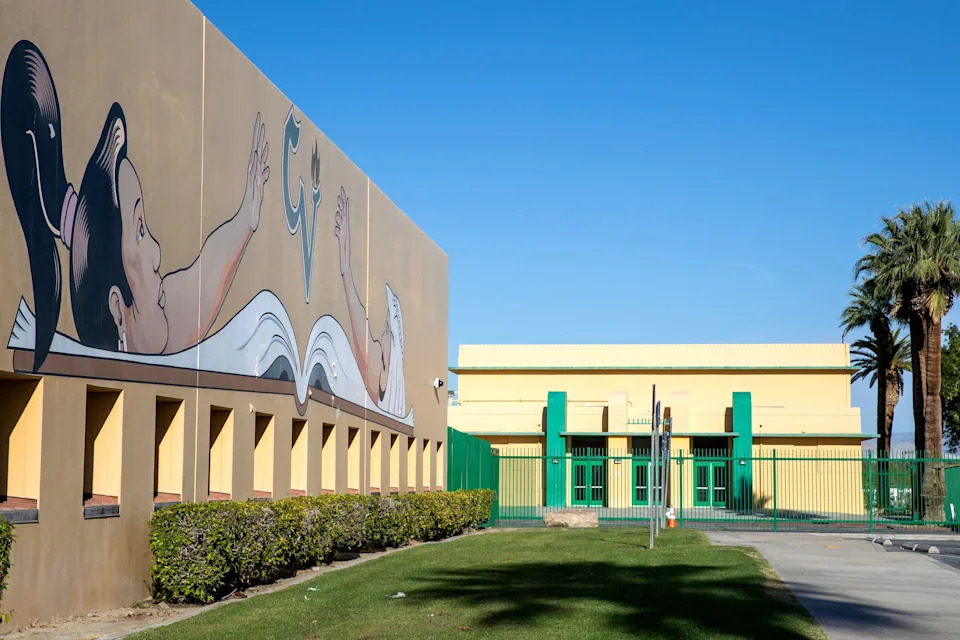
Coachella Valley High School in Thermal, built in 1910, is the oldest public school in the valley.
“The truth is the buildings where we learn do not reflect the talent, creativity and potential of the students who live inside,” Rodriguez said at the press conference on Thursday, Oct. 23.
The lawsuit, filed by the nonprofit law firm Public Advocates and partners including Morrison Foerster, names California Department of Education, Department of General Services, Office of Public School Construction and the State Allocation Board as defendants.
In addition to Rodriguez, the local plaintiffs named in the lawsuit include Sandra Ramirez, a parent and volunteer at CVUSD; Perla Penalber, a teacher at CVHS; and Alianza Coachella Valley, a nonprofit advocating for education and environmental justice in the eastern Coachella Valley and Salton Sea region.
The filing comes less than a year after voters approved Proposition 2, a $10 billion statewide school bond designed to fund renovation and construction for K-12 and community college facilities. Of that total, $8.5 billion is earmarked for K-12 modernization.
Plaintiffs argue that even with new funding, the state’s rules still favor wealthier districts that can raise local bond money to qualify for state matching funds — leaving districts with lower property wealth, like Coachella Valley Unified School District, at a severe disadvantage.
Subhed
That disparity is evident across the Coachella Valley.
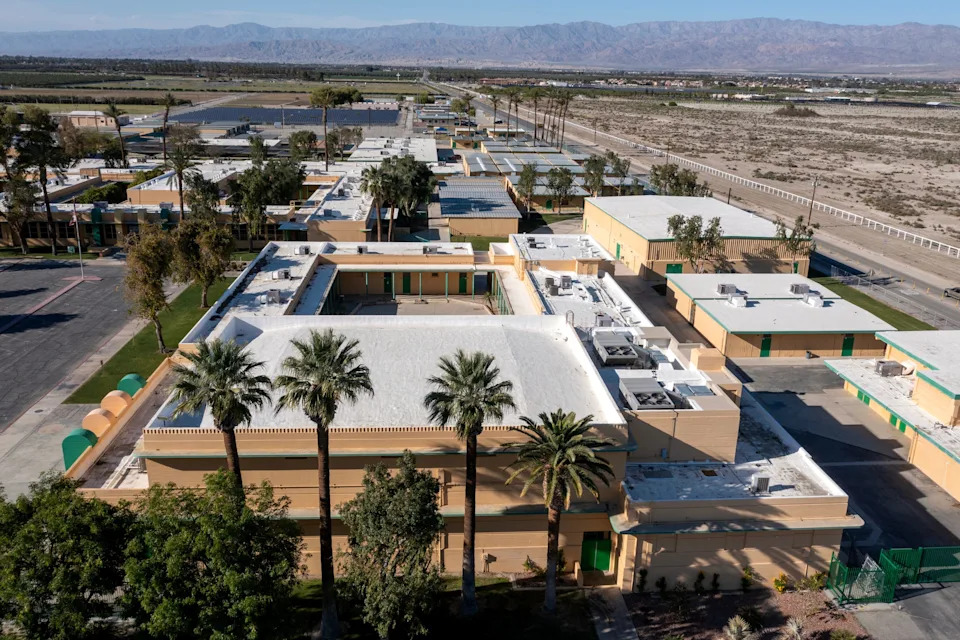
Coachella Valley High School, seen in 2024.
In March 2024, during California’s presidential primary election, Desert Sands Unified School District voters approved Measure A, a $675 million general obligation bond to repair and modernize campuses across the district. A few months later, in the November general election, Palm Springs Unified School District voters passed Measure S, a $465 million bond to upgrade school facilities.
By contrast, in January 2024, CVUSD’s board of trustees decided not to move forward with discussions for a potential bond measure to modernize Coachella Valley High School after holding three public meetings on the proposal in late 2023.
CVHS — the oldest public school in the Coachella Valley, opened in 1910 — remains a symbol of the district’s long struggle with underfunded facilities and aging infrastructure.
Adding to those challenges, CVUSD is also grappling with a budget shortfall that led to staff layoffs implemented at the start of the 2025-26 fiscal year.
‘Separate and unequal’
John Affeldt, one of the plaintiffs’ attorneys, called the current system “separate and unequal.” The state requires every district to contribute 40% of project costs from local bonds, regardless of its ability to raise funds, he said.
“Many students learn in climate-controlled comfort and present at college-like performing arts centers, while others in low-wealth districts suffer in stifling classrooms and ensure leaky roofs, black mold and gopher holes,” said Affeldt, managing attorney and director of education equity at Public Advocates, a nonprofit law firm and advocacy group.
Since 1988, he said, the lowest-wealth quartile of districts have received nearly 60% less in state modernization funding than the wealthiest quartile.
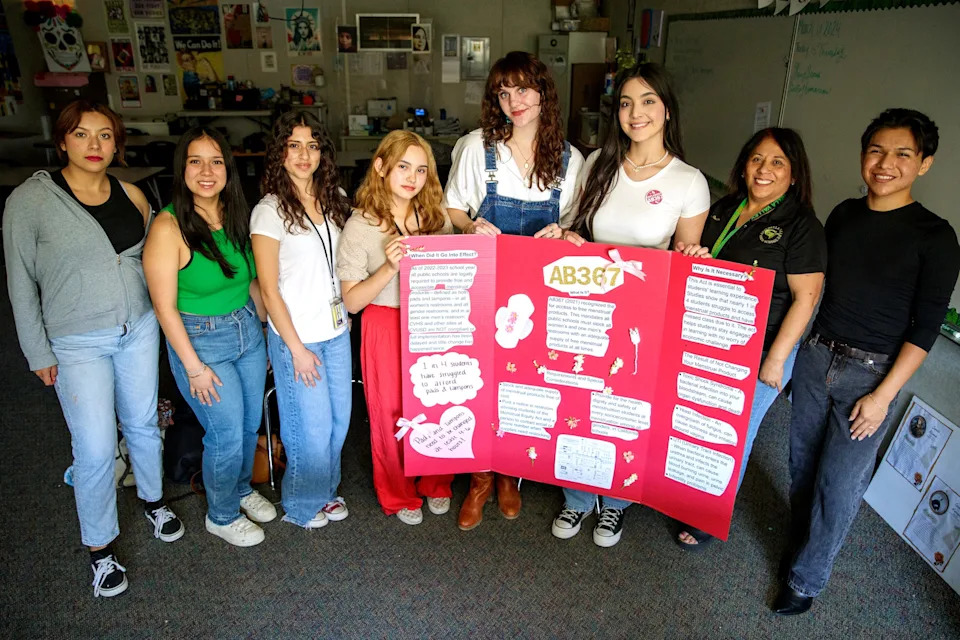
Miliani Rodriguez, third from left, along with fellow students and others advocating for menstrual equity in 2024.
‘Not the environment that inspires learning’
Rodriguez, the Coachella Valley High student, said sweltering classrooms and crumbling infrastructure have become routine at her high school.
Air conditioning units often fail during the desert’s triple-digit heat, leaving rooms to climb above 85 degrees. In winter, rain seeps through ceilings and fills buckets placed around classrooms. Some rooms have broken ceiling tiles, and teachers have reported rats nesting overhead. Flooding recently forced her ceramics class to halt work on their projects altogether.
“This is not the kind of environment that inspires learning,” she said.
Rodriguez, who has attended schools across CVUSD since kindergarten, said the disparity hit her when she visited a cousin’s school in a neighboring district just a few miles away.
“I was shocked. Their campus looked like a college campus to me,” she said. “Their buildings were modernized, they were clean, they had working air conditioning and they had plenty of space for sports and clubs. It made me realize that what I always accepted as normal at my school is not normal at all.”
A call for equity
Rodriguez has tried to improve her school environment through the Young Women Empowerment Club, which helped advocate for menstrual product dispensers in restrooms and promote restorative justice programs. Still, she said students shouldn’t have to lead those efforts just to have safe, functional facilities.
“Students should not have to fight this hard just to have the basics,” she said at the press conference. “The California Constitution promises every student a safe, clean and equitable education … and right now, that promise is being broken for students like me and thousands of others across the state.”
The plaintiffs are asking the court to order the state to adopt an equity-based funding formula that prioritizes need, ensuring Proposition 2’s billions reach the campuses most in disrepair.
“We deserve facilities that match the brilliance and potential of California’s young people, and we deserve schools that say to every student that, ‘You matter,’ because where we learn should reflect what we’re capable of becoming as California’s future leaders,” Rodriguez said.
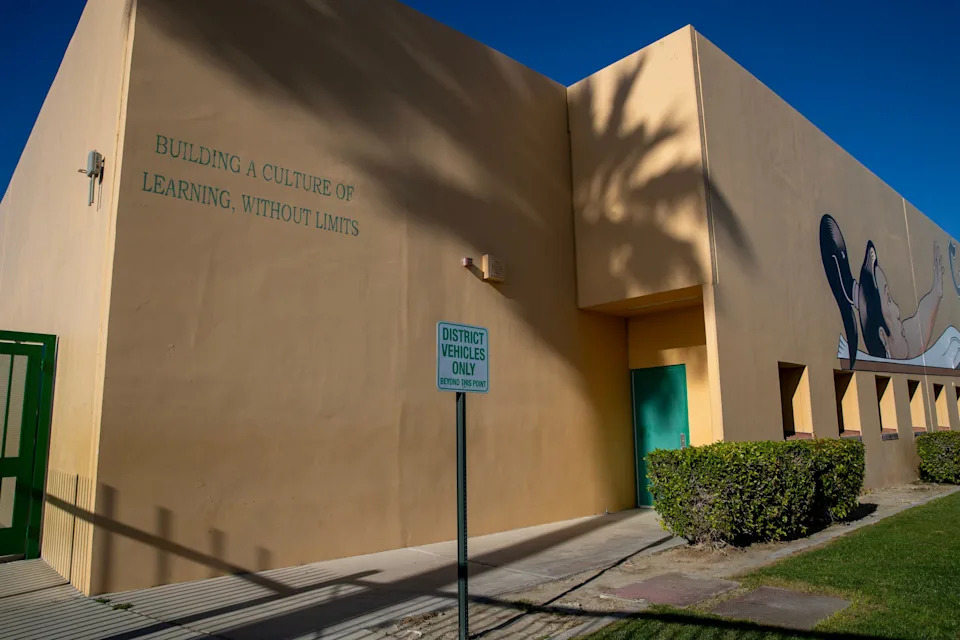
Rodriguez said she’s dealt with failing air conditioning, leaky roofs and other problems in her time at Coachella Valley High School.
Jennifer Cortez covers education in the Coachella Valley. Reach her at jennifer.cortez@desertsun.com.
This article originally appeared on Palm Springs Desert Sun: Thermal teen helps lead lawsuit on California school funding

